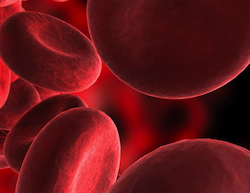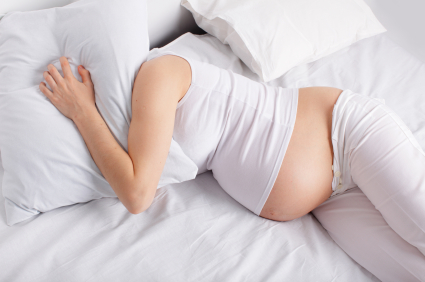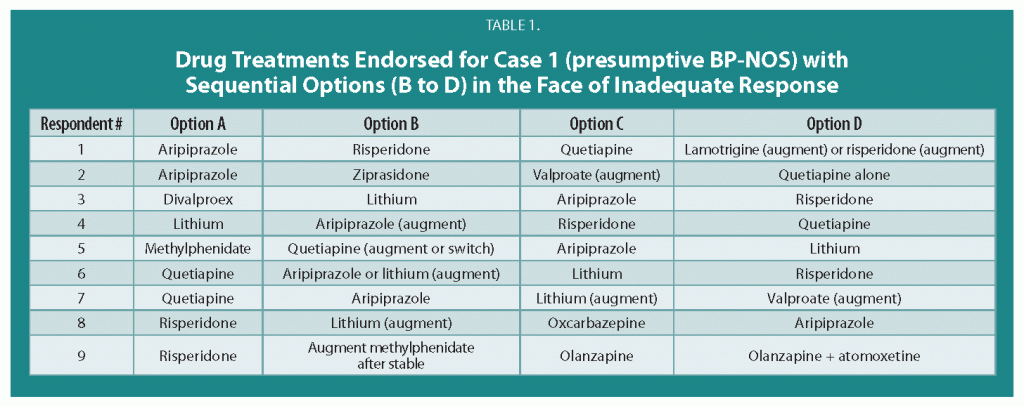Lower Blood Iron Levels Linked to More Severe ADHD
 At the 57th Annual Meeting of the American Academy of Child and Adolescent Psychiatry (AACAP) in October 2010, Chadi Calarge of the University of Iowa’s Carver College of Medicine reported that among children with attention-deficit hyperactivity disorder (ADHD), blood iron levels were inversely correlated with the severity of ADHD symptoms. That is, those with lower iron levels in their blood had greater severity of ADHD symptomatology and, in addition, required higher doses of stimulants to achieve effective results.
At the 57th Annual Meeting of the American Academy of Child and Adolescent Psychiatry (AACAP) in October 2010, Chadi Calarge of the University of Iowa’s Carver College of Medicine reported that among children with attention-deficit hyperactivity disorder (ADHD), blood iron levels were inversely correlated with the severity of ADHD symptoms. That is, those with lower iron levels in their blood had greater severity of ADHD symptomatology and, in addition, required higher doses of stimulants to achieve effective results.
Editor’s note: It would appear clinically useful to check blood iron levels in patients with ADHD symptomatology, particularly when symptoms are severe or when the illness requires very high doses of stimulants to achieve therapeutic effects.
Phosphatidylserine Omega-3 Fatty Acids in ADHD
Iris Manor reported at the 57th Annual Meeting of the American Academy of Child and Adolescent Psychiatry (AACAP) in October 2010 that phosphatidylserine (a phospholipid component) containing omega-3 fatty acids had significant positive effects in children with ADHD. These findings were notable because Manor and other investigators had previously found that omega-3 fatty acids themselves were not effective in ADHD, raising the possibility that the phosphatidylserine component offers unique therapeutic advantages. This compound is currently available in Israel and may become available in the US in the next year.
Memantine for Adult ADHD
At the 57th Annual Meeting of the American Academy of Child and Adolescent Psychiatry (AACAP) in October 2010, Craig Surman of Massachusetts General Hospital reported results from an open study suggesting that the anti-Alzheimer’s drug memantine (Namenda) was effective in the treatment of ADHD in adults.
Editor’s Note: Gianni Faedda also indicated to this writer that he had successfully used memantine, an antagonist of the glutamate NMDA receptor, for children with ADHD. He observed that memantine was also helpful in several of his treatment-resistant bipolar patients. Based on these anecdotal observations, this compound deserves further systematic exploration. It is also noteworthy that Amit Anand and colleagues found that memantine increased antidepressant response to lamotrigine in bipolar depression compared to placebo.
Maternal Depression May Affect Child’s Brain
At the 57th Annual Meeting of the American Academy of Child and Adolescent Psychiatry (AACAP) in October 2010, Dana Serino of Columbia University reported that mothers who experienced depression while pregnant had children with increased size in both their left and right medial temporal gyri, parts of the brain that may be responsible for judging distance, recognizing faces, and understanding word meaning.
Editor’s Note: These data extend preclinical studies that have shown that a variety of prenatal stressors are capable of exerting substantial effects on biology and behavior in children. In addition to affecting medial temporal gyrus volume, prenatal depression has also been shown to have effects on behavior of newborns, indicating that depression during pregnancy may have adverse effects on both the mother and the newborn.
Treatment Plans for Maladaptive Impulsive Aggression in Children
Maladaptive impulsive aggression often co-occurs with other psychiatric illnesses in children, so it can be difficult to find treatment solutions. A symposium at the 57th Annual Meeting of the American Academy of Child and Adolescent Psychiatry yielded some suggestions. Read on for an overview of impulsive aggression and possible treatment plans.
At the symposium, held in New York Oct. 26-31, 2010, panelists called maladaptive aggression the “fever” of child psychiatry (because it is common but also nonspecific) and described the phenomenon as “the language of the inarticulate.” The panelists drew a distinction between impulsive aggression, which describes behavior that is unplanned, unprofitable, and poorly controlled, and another phenomenon, predatory aggression, which describes behavior that is planned, sometimes profitable, and highly controlled.
The speakers on the panel indicated that impulsive aggression is related to other psychiatric syndromes including depression, attention deficit hyperactivity disorder (ADHD), mania, conduct disorder, oppositional defiant disorder, anxiety, post-traumatic stress disorder (PTSD), borderline personality disorder, autism, and schizophrenia. This raises problems for drug development, as Tom Laughren of the Federal Drug Administration (FDA) indicated in one talk at the symposium, because when new treatments are developed, they are studied in the context of only one primary disorder. Read more
Early Life Stressors Linked to Persistent Inflammation and Endocrine Abnormalities
Epigenetics is a relatively new area of study that examines changes in DNA regulation and structure that can come about as a result of environmental events, as opposed to the genetic inheritance (DNA sequence) people receive through their parents’ genes. Epigenetic effects occur when an environmental stressor or chemical causes methyl or acetyl groups to attach to DNA or to histones (around which DNA are wound). These epigenetic changes determine how difficult it is to turn on genes coded in the DNA (see here for more information about the way the environment produces these epigenetic effects).
After the jump: Several studies presented at the 65th Annual Scientific Convention of the Society of Biological Psychiatry earlier this year suggested a link between environmental stress and both inflammation and abnormalities in DNA.
 Read more
Read more
Children with ADHD and Oppositional Symptoms Respond to Guanfacine
Researcher Daniel Connor reported at the 65th Annual Scientific Convention of the Society of Biological Psychiatry that children aged 6-12 with oppositional symptomatology and attention-deficit/hyperactivity disorder (ADHD) improved on guanfacine XR.
Doses ranged from 1 to 4 mg/day, with a mean dose of 2.9 mg/day. There was a substantial decrease in oppositionality (a finding with a moderate effect size of 0.59) and a marked decrease in ADHD symptomatology (a finding with a large effect size of 0.92). Side effects included drowsiness (in 51% of subjects), headache (22%), sedation (13%), abdominal pain (12%) and fatigue (11%). Guanfacine is not a psychomotor stimulant, like most of the treatments for ADHD are, but an agonist (activator) of noradrenergic ?2 receptors in the brain.
Almost 40% of Children with Bipolar Disorder May Not Receive Necessary Treatment
 An article by Geller et al. in Bipolar Disorders last year illustrates the crisis in the treatment of childhood-onset bipolar illness in the US. The article indicates that almost 40% of the children with a credible diagnosis of bipolar disorder in this study never received anything near the appropriate treatment for their illness.
An article by Geller et al. in Bipolar Disorders last year illustrates the crisis in the treatment of childhood-onset bipolar illness in the US. The article indicates that almost 40% of the children with a credible diagnosis of bipolar disorder in this study never received anything near the appropriate treatment for their illness.
It is unfortunate when children fail to receive appropriate treatment because of ambiguity about a diagnosis, but it is even more frustrating when one of the world’s experts makes a diagnosis, and a child still fails to receive treatment based on consensus guidelines.
Over 8 years of follow-up treatment in their communities, these very ill children not only did not receive helpful drugs such as atypical antipsychotics or mood stabilizers, but they often received treatments that can be counterproductive, such as antidepressants or psychomotor stimulants. Those children who did receive appropriate treatment with lithium fared better and recovered significantly earlier than the others. Read more
Treatment Guidelines for Two Hypothetical Cases in Children
There are no FDA-approved treatments for children under age 10 with bipolar disorder. For an article in Psychiatric Annals, this editor and Janet Wozniak asked experts how they would sequence treatment of a hypothetical case of a 6-year-old with extreme mood instability consistent with a diagnosis of BP -NOS (see Table I). We also asked how the experts would treat a different case of a 9-year-old with a full-blown psychotic BP-I mania (see Table II).
The results are presented and discussed in detail in the article, and are presented here to reinforce several points. The recommendations for children under 10 and for BP NOS are highly similar to consensus guidelines for older BP I children compiled by Kowatch et al.
Treatments in the face of non-response to option A or others are sequenced differently by different experts, but almost always involve an atypical antipsychotic (AA) or a mood stabilizer (MS) such as lithium, valproate, carbamazepine/oxcarbazepine, or rarely, lamotrigine. Revisions of atypical antipsychotics and mood stabilizers and use of combinations are the common next strategies.
Oxcarbazepine May Be Helpful In Pediatric Mania
Oxcarbazepine (OXC; Trileptal) is a close structural relative of carbamazepine (CBZ; Tegretol; Equetro), but unlike CBZ, OXC is not an enzyme inducer, nor does it have CBZ’s risks of rare agranulocytosis or aplastic anemia.
Wagner et al.’s report on OXC in the American Journal of Psychiatry in 2006 is typically cited as evidence the drug is ineffective for pediatric mania. But observe the figure:
While this was true of OXC’s efficacy in adolescents (due to a large placebo response—see rightmost column), OXC worked significantly better than placebo in children ages 7-12. These younger children often have more chronic presentations and BP-NOS. This may explain the low placebo response rate in the younger children.
Oxcarbazepine is considered helpful by many clinicians (See Post and Wozniak’s survey of expert treatment approaches to childhood illness, published in Psychiatric Annals in 2009) and should not be dismissed altogether.







